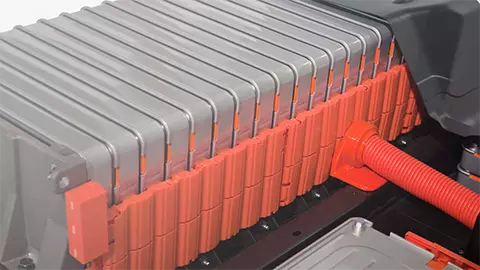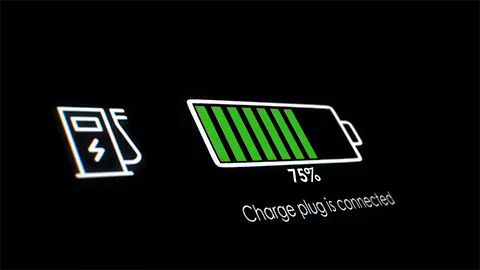How Batteries Work
The battery pack in an EV sends electricity to a controller which runs the car’s electric motor or motors. Think of the battery as a device that stores chemical energy and converts it into electricity. Inside, the battery is made up of electrochemical cells and each cell has two half-cells that are called electrodes. One of these half-cells is the negative electrode and it holds negatively charged subatomic particles called electrons. The other half-cell is the positive electrode, which contains no electrons at all. When the negative and positive electrodes are connected, the negative electrode to the positive one and this flow is called electricity.
The resulting energy is used to run the electric motor in your EV. As the electrons continue to flow, they eventually slow down and the voltage produced by the battery drops. When the flow has reduced to the point where there are as many positive electrons on the positive side as there are on the negative side, the battery no longer produces an electric flow of current.
Thankfully, EV batteries are rechargeable and by plugging in your car, electric energy is used to reverse the negative and positive halves of the cells, thus restarting the electron flow. Hey, you’re the one who wanted to read about how EV batteries work. Sorry if this sounds like a high school science class.
There are three different kinds of batteries used in today’s electric cars - lead-acid batteries, nickel metal hydride batteries, and lithium-ion batteries.
Types of EV Batteries
Lead-acid batteries are used in all gasoline-powered vehicles to provide electricity in order to crank over the engine and get the car started. Invented in 1859, lead-acid batteries are the oldest form of rechargeable battery that is still on the market and are also called wet cell batteries because they use a mild solution of sulfuric acid. The name comes from the combination of lead electrodes and acid that is used to generate electricity. You’ll find them used in EVs to power secondary features such as the infotainment system or driver assist tech.
Nickel metal hydride batteries began to be used in the 1980s and are known for their high energy density. In other words, they pack a lot of power in a small package. Because they don’t contain any toxic metals, they are easy to recycle. Here the positive electrode contains nickel oxide-hydroxide as an active material and the negative electrode is made of a hydrogen-absorbing alloy. They have a much longer life than lead-acid batteries are widely used in hybrid and plug-in hybrid vehicles.
Lithium-ion batteries first appeared in EVs in the 1990s. They have a very high energy density and hold their charge longer, making them excellent for powering electric vehicles. Energy density refers to the ratio between the storage capacity of the battery and its weight. By comparison, a lithium-ion battery offers ten times the density of a lead-acid battery. Lithium-ion batteries produce high voltage - are easy to recharge and are extremely durable - lasting longer than the car itself.

















